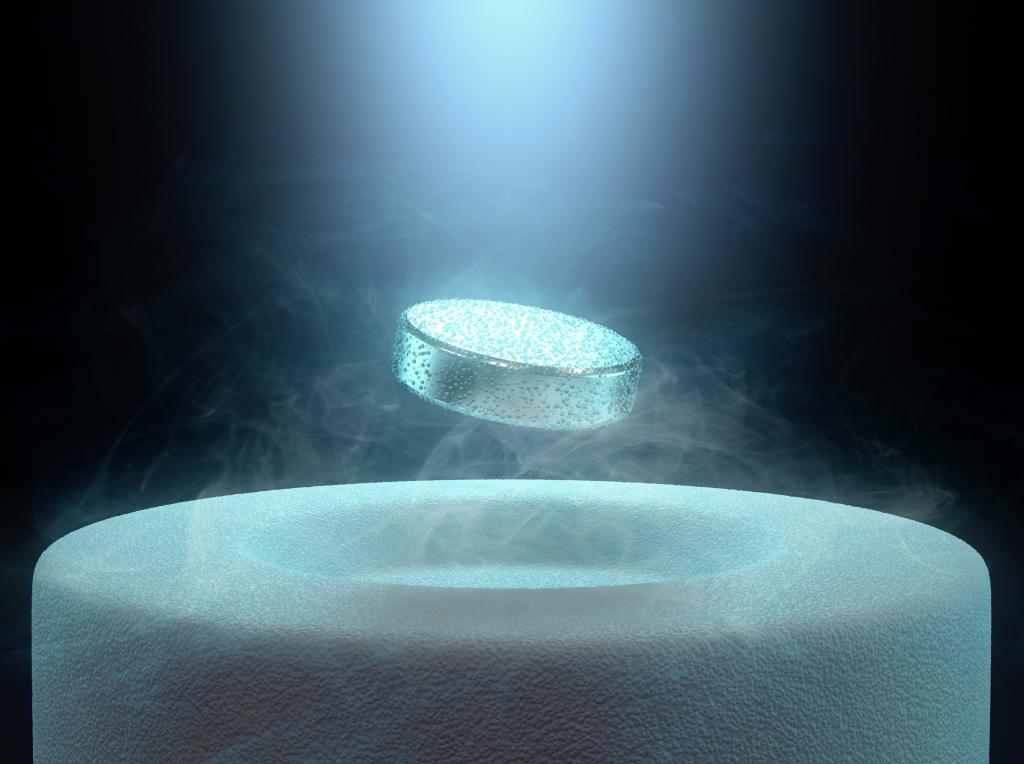
If you’re someone who loves an internet hype cycle, good news: There’s a new group of scientists who claim to have discovered a near-room-temperature superconductor.
Yes, again.
People on X (formerly Twitter), Hacker News and all the other places science enthusiasts post are getting worked up about a new material described in a paper that was posted on Tuesday to arXiv, the pre-print server. (It should be noted that most of these people do not appear to be scientists let alone condensed-matter physicists.) In the paper, the Chinese team says the material exhibits one of the properties of superconductors at temperatures as warm as –23°C (–9.4°F). That’s not room temperature, but it’s much easier to maintain than existing high-temperature superconductors, which have to be at around –170°C (–274°F).
If the paper’s results are what they say, that is.
It wouldn’t be the first time people’s hopes were dashed. Last year was a banner year for room-temperature superconductors that weren’t. The one that grabbed the most headlines — LK-99 — dominated the internet for a few weeks over the summer before succumbing to the scientific method. Turns out it was little more than a lead-laced refrigerator magnet. Another one, detailed in a paper co-authored by Ranga Dias and others, made a splash in March only to be subject to a retraction in September.
This new material picks up where LK-99 left off, which isn’t really an auspicious starting point.
Like LK-99, it’s a copper-doped lead apatite, a crystalline form of lead containing copper. This new material tinkers with LK-99’s chemical formula a bit, tweaking the ratios and adding sulfur. Those of you with exceptional memories might remember that copper sulfide was the contaminant that gave LK-99 its bizarre properties; once other scientists made an uncontaminated sample, those properties vanished.
The team behind this new material added the sulfur intentionally to create lead sulfide. They succeeded, but they also ended up making copper sulfide. They tried to tease out the two effects, and they acknowledged that the contaminant’s presence generated some interference when they went to test for superconductivity. At least the team was transparent about that.
Another room-temperature superconductor bites the dust
If my skepticism was piqued by the material’s similarity to LK-99, it grew as I read the five-page paper. At first, the brevity gave me some pause, as did the low-res figures, which looked like they were scanned from the output of a dot-matrix printer. The single paragraph that describes how the team created the material is about 100 words long. Concise methods aren’t bad, per se, but generally the more detail, the better.
Then there’s the data: While the team tested for the Meissner effect, they didn’t report testing whether the material exhibited any resistance. The only reported test involved sweeping the material with a magnetic field generated by a direct current and observing its magnetic properties. That’s odd because the definition of a superconductor is a material that conducts electricity without any resistance.
Now, I’m not a condensed matter physicist, but I do have an advanced scientific degree (meaning I’ve read a lot of scientific papers), and I’ve been a science journalist for well over a decade (meaning I’ve covered a wide range of fields, including physics). None of what I read or saw in that paper gives me confidence that this thing is real. I’m not alone, either: After I read the arXiv paper, I came across posts from fellow science journalist Dan Garisto, who is much more qualified than me to weigh in on the matter. He’s maybe even more skeptical than I am.
I might be proven wrong — wouldn’t that be great, actually! The world could use a superconducting material made from abundant materials that doesn’t require liquid nitrogen or helium to maintain its special properties. But the odds are stacked against it. Don’t hold your breath (again).


